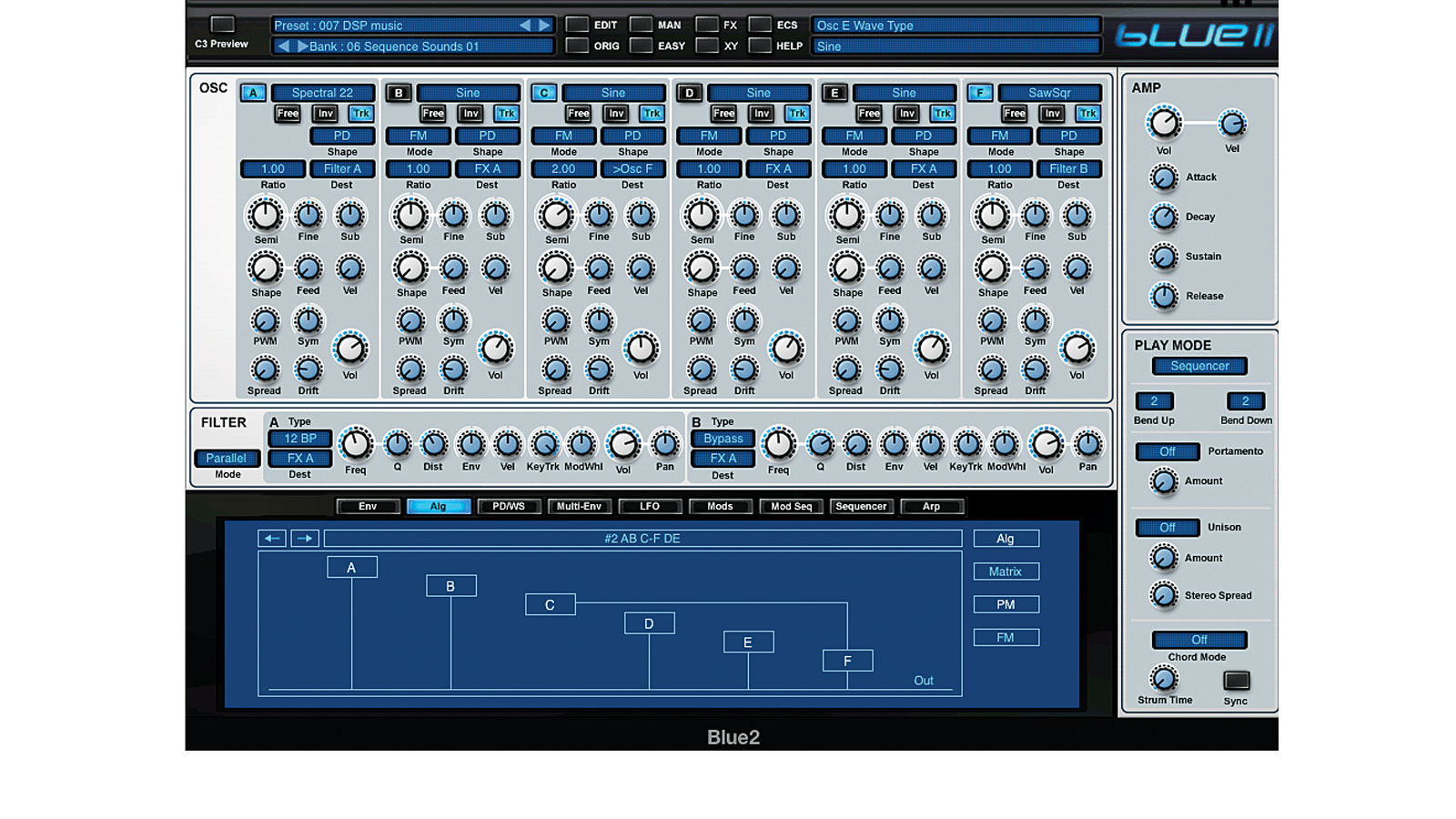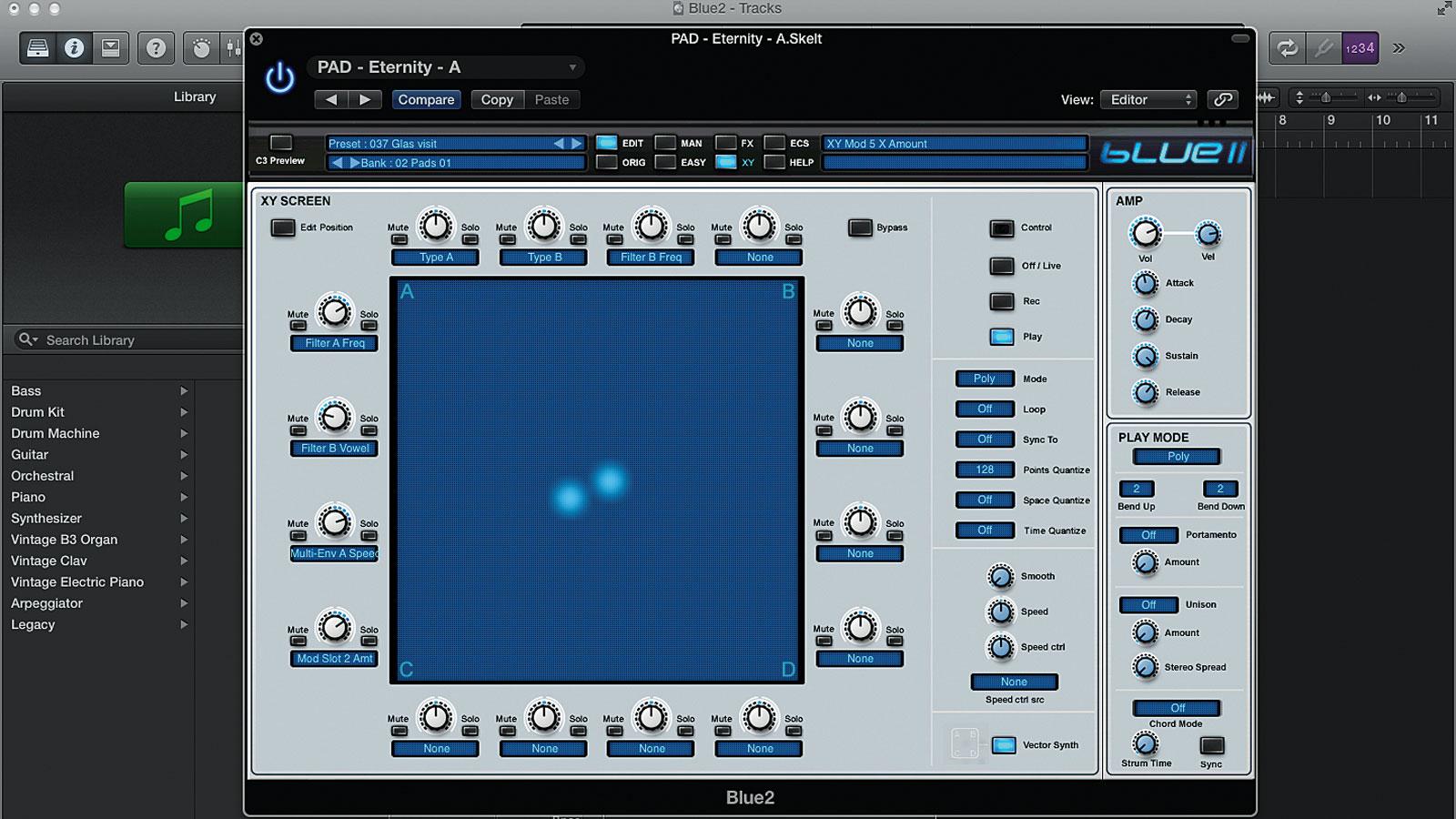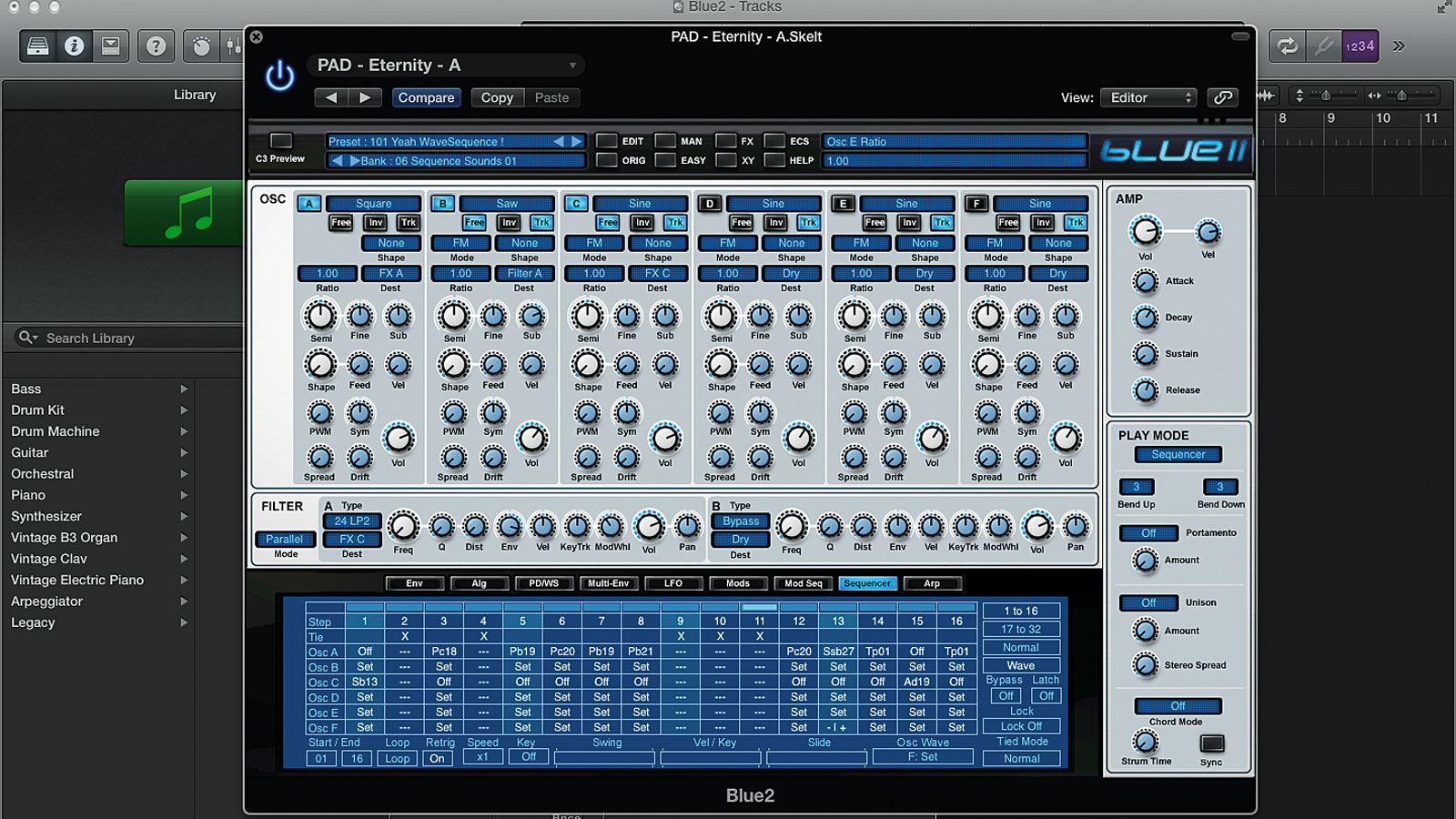MusicRadar Verdict
A flexible, beautiful synthesiser with a comprehensive array of powerful sound- shaping techniques onboard - both 'old' and 'new' - Blue II is an instant classic.
Pros
- +
Excellent X/Y pad. Wavesequencing. Superb sample selection. Improved FM. Top-notch presets.
Cons
- -
No sample import.
MusicRadar's got your back

Rob Papen Blue II

X/Y controller

Wavesequencing
Nine years have passed since Rob Papen's Blue first hit. Packing one of the most comprehensive synthesis engines of the day, along with a boatload of amazing presets, it quickly became a firm favourite of sound designers looking for something beyond the conventional analogue emulations that dominated at the time.
Now, Papen and developer Jon Ayres of ConcreteFX have unleashed a sequel. Like its forebear, Blue II is a cross-platform plugin in 32- and 64-bit VST, AU and AAX formats.
We have to admit to being slightly underwhelmed by the press release, which made it look like Blue II could just be a glorified point release in the guise of an upgrade. Thankfully, though, it took only the briefest of plays to quell any such fears, revealing improvements throughout the instrument's architecture, along with some significant additions that aren't immediately obvious.
"Blue II adds features that will please lovers of both cutting-edge modernist sounds and of vintage tones"
The original Blue was built around what Papen dubbed "crossfusion" synthesis, combining familiar analogue subtractive synthesis with old-school six-operator FM, along with a bit of phase distortion and wave shaping.
It also threw in such extra niceties as step sequencing, multistage envelope generators, dual effects processors and loads of additive and digital waveforms to complement the standard analogue fare.
Blue II adds features that will please lovers of both cutting-edge modernist sounds and of vintage tones. The latter is fostered by the addition of user-adjustable analogue drift, a sub- oscillator (sine/square) and aliasing-free analogue (and spectrum) waveforms.
The Blue print
Each of Blue II's six oscillators now sports even more waveforms from which to choose, including a large assortment of sampled instrumental sounds running the gamut from drums and percussion to pan pipes, vocals and muted guitars.
A variety of effects-processed samples are included as well - these clearly aren't intended to bring Blue II into the ROMpler game, but rather to beef up its ability to produce lush, complex timbres and provide fodder for rhythmic sequences. Unfortunately, though, you can't import your own samples.
The improvements to Blue's FM synthesis engine are of particular note. The original version presented its FM 'DX-style': 32 preset algorithms, each with its own hardwired signal path. This time around, though, the user holds the reigns, taking command of the new Matrix in the Algorithm section.
This enables you to use any and all oscillators as modulators and sources, routing them any way you see fit, and thus opening up a richer palette of raw sound for shovelling into the dual filters (serial or parallel), modulating, sequencing and processing. The old preset algorithms are still there, too, if you need them, of course.
On the subject of filters, Blue II more than doubles the number of modes on offer, with a whopping 28 from which to choose, newcomers including 18 and 36dB/octave LP/HP modes and formant filters. There are also new variations on all of the 12dB and 24dB modes, differing in cutoff and resonance responses and going by names like 12 BP2 and 24 LP2 to distinguish them from the originals. The 18dB LP stands out with its particularly satisfying squelch, while the two Formant modes deliver surprisingly beefy tones. Self-oscillation isn't an option, alas.
Mod modes
Some of Blue II's modulation routing is handled right in the main view, with dropdown menus used to send oscillators to filters, effects or the dry output, and filters routed in the same way. The real fun is to be had by clicking the Mods button in the lower half of the interface, revealing 20 slots for assigning any of Blue II's 75 sources to any of its 411 (seriously!) destinations.
MIDI sources are, of course, included (although Blue II's excellent and easy MIDI learn functions make assigning incoming controllers a snap anyway), and all six oscillator waveform selections are notably featured among the destinations.
Each oscillator and filter gets its own six-stage envelope, as does volume. Additionally, there are four syncable, loopable multistage envelopes and 14 LFOs, not to mention three Mod Sequencers and beefed-up versions of the original's excellent step sequencer and arpeggiator.
The Step Sequencer is particularly good, facilitating the creation of Wavestation-style wavesequences with each step playing back a different waveform from the six oscillators. Fantastic!
Out of the Blue
There are more new additions and features in Blue II than we have room to list, but we'd be remiss if we didn't highlight the doubled number of effects slots (with 35 effects algorithms available), each of which can be modulated via its own 2x2 matrix; the reworked audio engine; and the RP-Verb-based reverb algorithm. And this being a Papen synth, you get a huge variety of categorised presets that do a great job of showing off the instrument's sound.
And how is that sound? At turns lush, deep, complex and alive, or biting, aggressive, and modern - sonically, Blue II is beyond reproach. Blue II is a truly sophisticated synth, offering endless programming possibilities, and whether you're upgrading or buying new, it's worth every penny and then some.
Computer Music magazine is the world’s best selling publication dedicated solely to making great music with your Mac or PC computer. Each issue it brings its lucky readers the best in cutting-edge tutorials, need-to-know, expert software reviews and even all the tools you actually need to make great music today, courtesy of our legendary CM Plugin Suite.
“A synthesizer that is both easy to use and fun to play whilst maintaining a decent degree of programming depth and flexibility”: PWM Mantis review
“I feel like that song had everything we needed to come back with”: Bring Me The Horizon’s Lee Malia on Shadow Moses, its riff and the secrets behind its tone, and why it was the right anthem at the right time
“I said, ‘Are we sure we can write a song about death?’”: The story of Mike + The Mechanics' classic No.1 The Living Years










